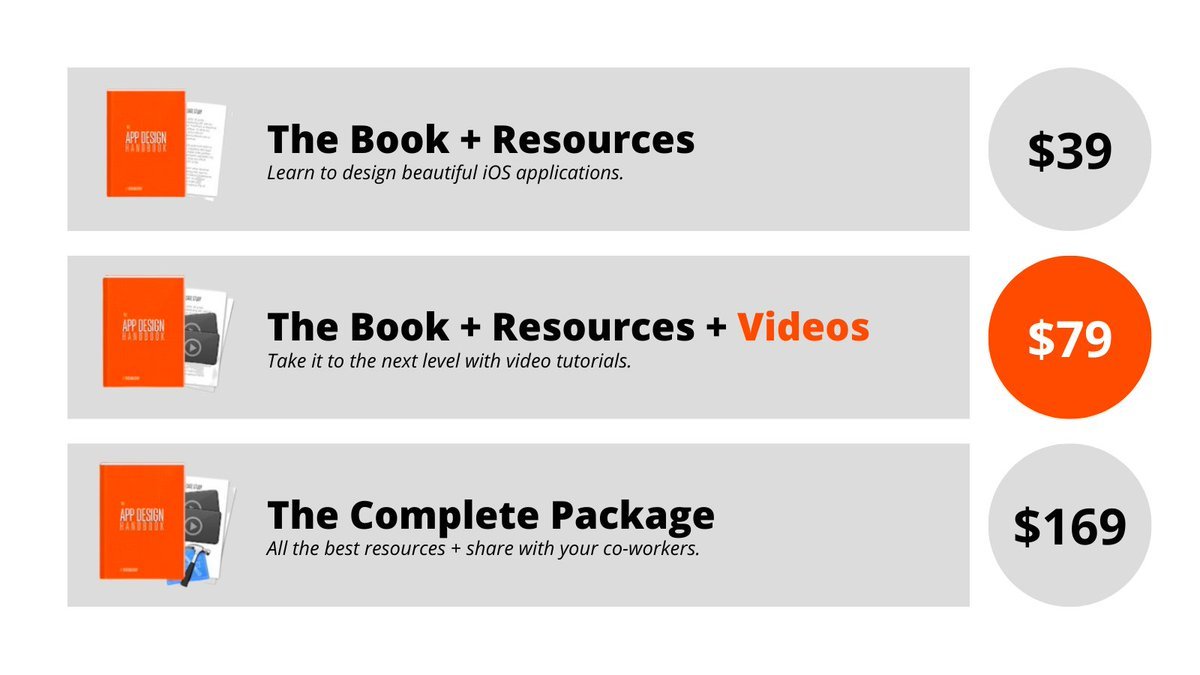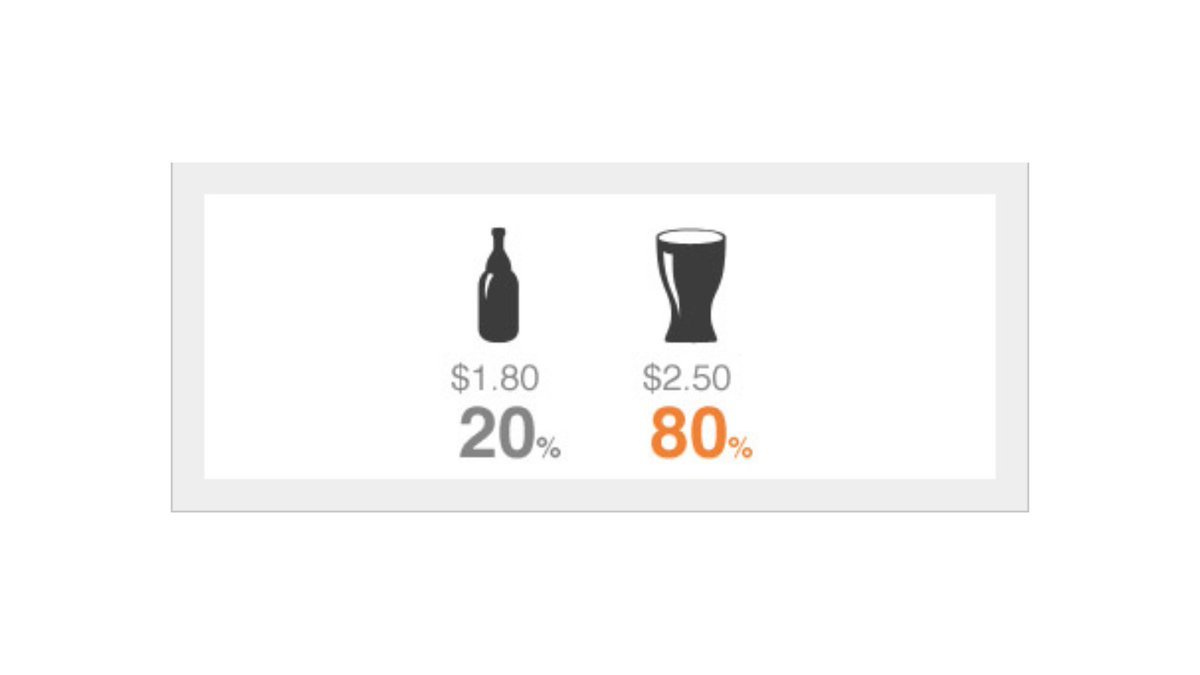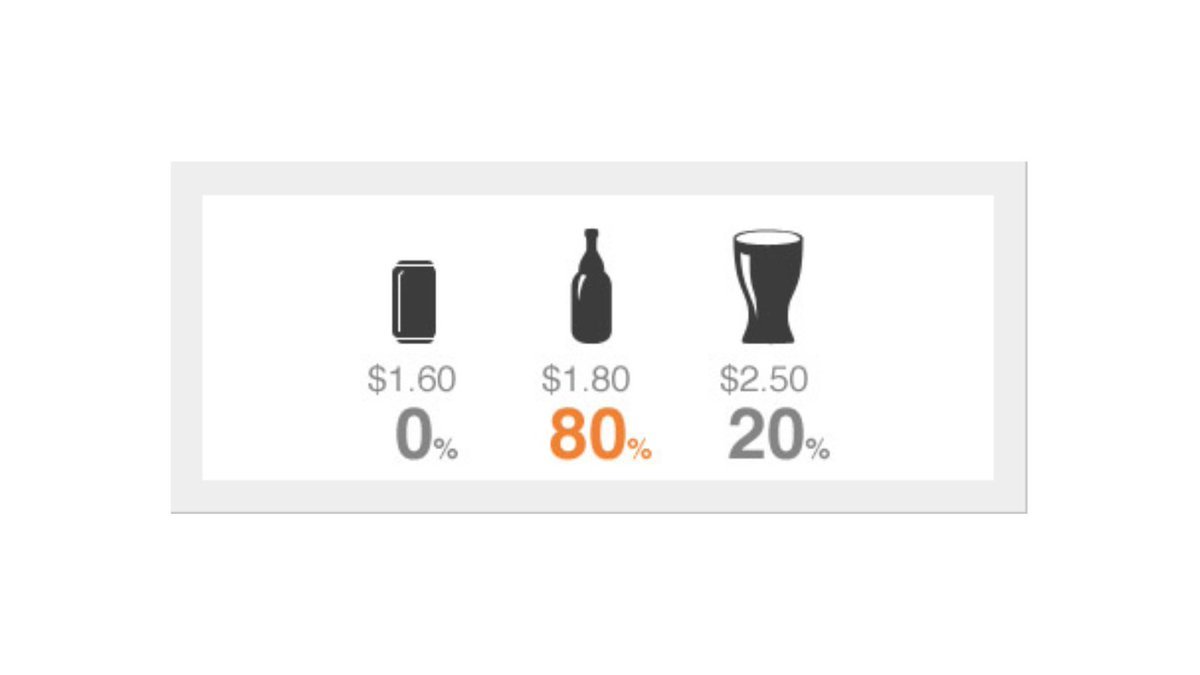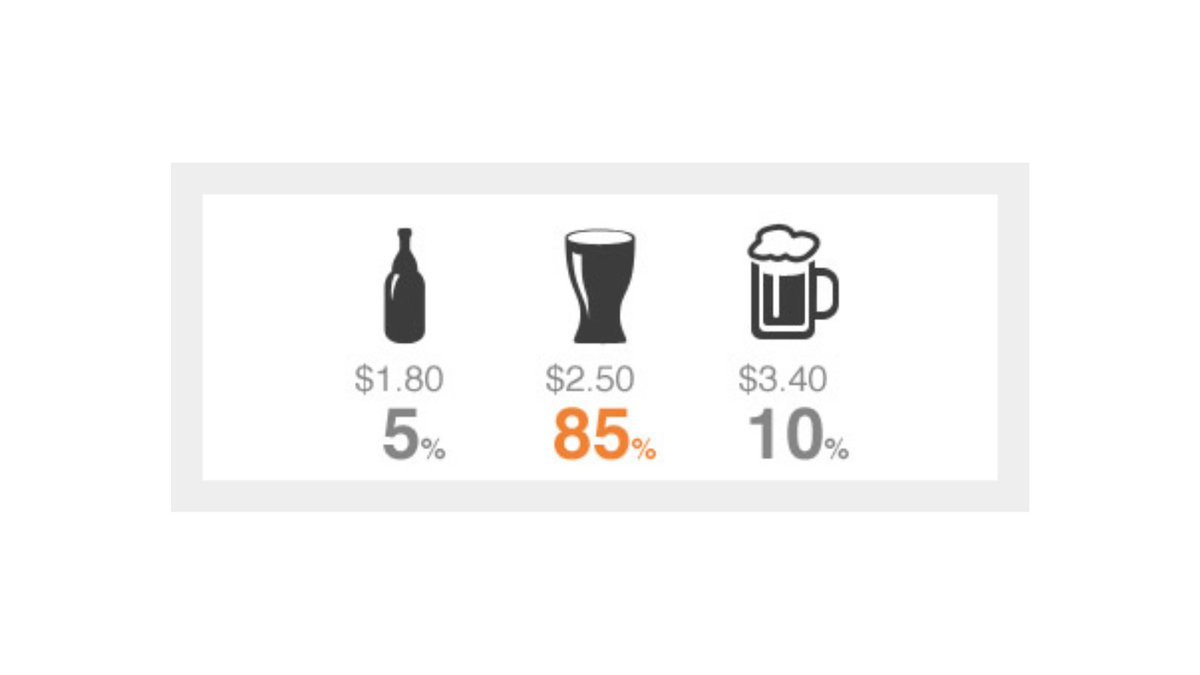Thread by Nathan Barry
- Tweet
- Oct 15, 2022
- #Pricing #CreatorEconomy
Thread
The pricing technique every creator needs to know to double revenue:
In 2012, I launched my first product, The App Design Handbook.
But in a hurry to get the product out the door, I almost made a costly mistake…
It’s a mistake I see creators make every single day.
But in a hurry to get the product out the door, I almost made a costly mistake…
It’s a mistake I see creators make every single day.
It’s not charging too little for your product.
(Although this is a common mistake as well)
It’s only having one price for your product!
(Although this is a common mistake as well)
It’s only having one price for your product!
I created three pricing tiers for my product, The App Design Handbook.
1. The Book + Resources
2. The Book + Resources + Videos
3. The Complete Package
It made me an extra $15,000.
1. The Book + Resources
2. The Book + Resources + Videos
3. The Complete Package
It made me an extra $15,000.
When you only have one price for your product, you leave a lot of money on the table!
Tier-based pricing unlocks various pricing hacks so you can make more money.
Here’re three advantages of having price tiers:
Tier-based pricing unlocks various pricing hacks so you can make more money.
Here’re three advantages of having price tiers:
1. Pricing for Value
We’ve all heard you should price your product based on the value it delivers.
But value changes for each person.
For example:
Customer 1 - Might be a niche iPhone developer
Customer 2 - Might be a developer of a very popular iPhone app
We’ve all heard you should price your product based on the value it delivers.
But value changes for each person.
For example:
Customer 1 - Might be a niche iPhone developer
Customer 2 - Might be a developer of a very popular iPhone app
The value is different for these two customers.
The customer who would get more value from the product should pay more for it.
That’s where multiple prices come in!
The customer who would get more value from the product should pay more for it.
That’s where multiple prices come in!
The developer of the popular iPhone app will easily pay more if they think it’ll help them.
(Especially if they are using a company credit card)
To them, there is no difference between $40 and $170.
And to me, I just made 4x as much on the sale.
(Especially if they are using a company credit card)
To them, there is no difference between $40 and $170.
And to me, I just made 4x as much on the sale.
Pro Tip for Pricing for Value:
When selling to businesses, it’s very important to understand how purchases are made for your type of product.
What is the threshold for companies to spend petty cash versus having to get a manager's approval?
When selling to businesses, it’s very important to understand how purchases are made for your type of product.
What is the threshold for companies to spend petty cash versus having to get a manager's approval?
2. Price Anchoring
Consumers typically determine worth by comparing it to something similar.
“This ebook is $1.99, so this one should be $1.99 too!”
We don’t want our customers making that comparison, so let’s control what they compare it to…
Consumers typically determine worth by comparing it to something similar.
“This ebook is $1.99, so this one should be $1.99 too!”
We don’t want our customers making that comparison, so let’s control what they compare it to…
If I tell you my book is $39, you need to compare the value to something else.
Alone, the book might sound overpriced considering the price of other ebooks!
But if I tell you the book is $39, but for $79 you can buy the book plus all these great videos and code samples…
Alone, the book might sound overpriced considering the price of other ebooks!
But if I tell you the book is $39, but for $79 you can buy the book plus all these great videos and code samples…
Now, you aren’t comparing my book to another book.
You are comparing the $39 offer to the $79 offer.
Aha!
All of a sudden, $39 sounds reasonable.
By adding a second offer, I completely changed the conversation.
But what if we added a third offer?
You are comparing the $39 offer to the $79 offer.
Aha!
All of a sudden, $39 sounds reasonable.
By adding a second offer, I completely changed the conversation.
But what if we added a third offer?
3. Bracketing
Let’s say I add a third option for $169…
Through bracketing, I’ve driven the focus towards the middle package.
While $79 might’ve seemed expensive before…
Now it is reasonable in the middle!
Let’s run through a quick example:
Let’s say I add a third option for $169…
Through bracketing, I’ve driven the focus towards the middle package.
While $79 might’ve seemed expensive before…
Now it is reasonable in the middle!
Let’s run through a quick example:
You own a bar.
You offer two types of beer:
• Bargain beer ($1.80)
• Premium beer ($2.50)
80% of people choose premium beer.
But you want to increase your revenue…
You offer two types of beer:
• Bargain beer ($1.80)
• Premium beer ($2.50)
80% of people choose premium beer.
But you want to increase your revenue…
One day you introduce a super bargain beer for $1.60.
80% buy the $1.80 beer and the rest buy the $2.50 beer.
Nobody bought the cheapest option.
This is no good!
You lost revenue because you bracketed your price down.
But what if you bracket up?
80% buy the $1.80 beer and the rest buy the $2.50 beer.
Nobody bought the cheapest option.
This is no good!
You lost revenue because you bracketed your price down.
But what if you bracket up?
You remove the $1.60 beer and replace it with a super premium $3.40 beer.
Most people buy the $2.50 beer, 10% buy the $3.40 beer, and a small amount buys the $1.80 beer.
By bracketing up, you increased revenue significantly!
(I wish beer still cost this little)
Most people buy the $2.50 beer, 10% buy the $3.40 beer, and a small amount buys the $1.80 beer.
By bracketing up, you increased revenue significantly!
(I wish beer still cost this little)
Offering multiple prices for your product is a hack for increasing revenue.
If you learned something, follow me @nathanbarry to learn more about startups, audience building, & earning a living as a creator.
If you learned something, follow me @nathanbarry to learn more about startups, audience building, & earning a living as a creator.
Retweet the original tweet in this thread to help creators earn more with their products:
Mentions
See All
Sahil Bloom @SahilBloom
·
Oct 15, 2022
Every creator needs to read this



